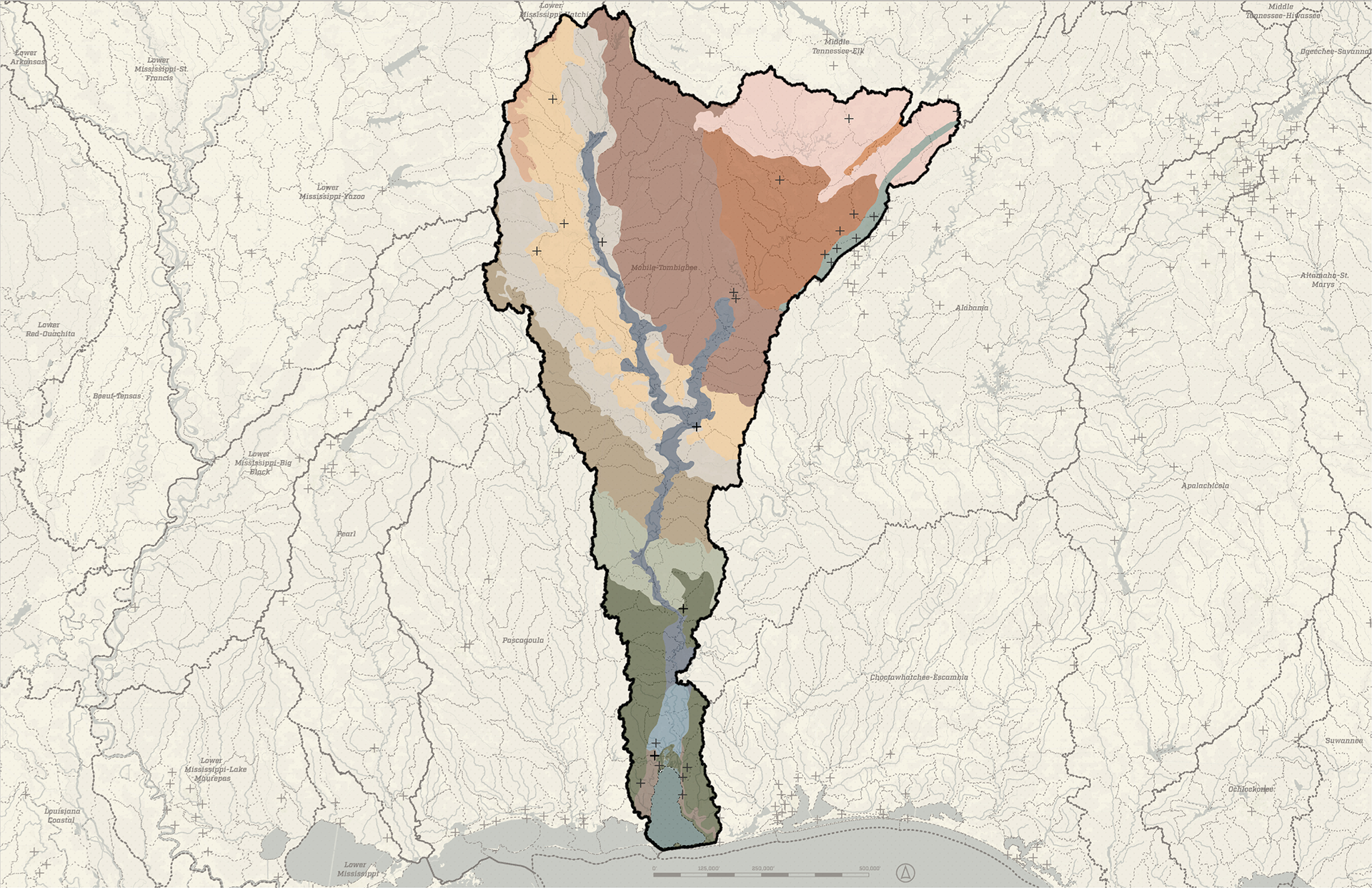After researching water systems in the Gulf Coast, the design phase of this project is sited along the Tombigbee River and its watershed in Alabama. This project proposes a new regional water-sharing system that relies on adapting river dams and the hybridization of grey and green infrastructure at the scale of the watershed. Each existing dam along the river is reconceived as a potential "cradle" that can store water in upstream settlements where rainfall is more abundant. That water can then be released or "spilled," using the existing gravitational force of the river to transport water downstream to settlements more prone to drought. In river-adjacent towns, each cradle incorporates some form of public space and habitat enhancement that, taken together, can function as additional civic infrastructure. This combined approach -- which adapts existing grey infrastructure (dams) for water storage and release, combines this water infrastructure with civic and cultural spaces, and introduces additional green infrastructure throughout the watershed -- functions to foster a sense of regional community and mutual responsibility among cities that may feel otherwise disconnected.

Highlighted Tombigbee Watershed

Isolated Tombigbee Watershed

Ecoregions

Drought Conditions

Rainfall Conditions
This project tests this cooperative watershed management system within the Mobile-Tombigbee Drainage Basin, specifically along the Tombigbee River in Alabama. Within this context, three settlements play pivotal roles in the water-sharing regime: Demopolis upstream, Jackson midstream, and Mobile downstream. Demopolis assumes the role of the abundance node within the system, responsible for water storage and subsequent distribution to downstream cities. The Demopolis Lock and Dam is adapted as a strategic infrastructure for holding and releasing water in alignment with the opportunity's constraints established through the water-sharing network. The site adjacent to the dam, where water is held and stored, incorporates a terraced landscape that doubles as a floodable park, fostering public appreciation of water and integrating water storage with cultural programs that highlight the settlement's history.
As the midstream node, Jackson possesses some storage capacity but primarily focuses on adapting its water treatment facilities as public-facing amenities. Given that 22 percent of Jackson's population works in manufacturing, the city's location along the Tombigbee River makes it a hub for industry. Industrial landscapes and infrastructure, including a dam built solely for industrial activity, are repurposed for water storage and green infrastructure.
In Mobile, the coastal node where drought is most prevalent, this project proposes smaller-scale green infrastructure improvements to create redundant spaces for additional water storage that, in addition to water being sent down the river from upstream, can be tapped into during times of scarcity.

Demopolis, AL

Jackson, AL

Mobile, AL
At its core, this project encourages people to accept and celebrate the reality that, as governments, communities, and individuals, we have an essential responsibility to one another.
The project aims to establish a sense of collective responsibility and care that is closer in line with the natural boundaries that water has shaped in the landscape. This value can be extended to the entire Gulf Coast region.
DEMOPOLIS SITE SECTION
From left to right: Demopolis Lock and Dam, Pier, Terraces, Tombigbee River, Demopolis Chalk Bluffs, Demopolis Civic Center
DEMOPOLIS SITE PLAN: HIGH WATER LEVELS
Only the upper terrace is inhabitable, with large pools of water settling in the depressions.
DEMOPOLIS SITE PLAN: LOW WATER LEVELS
All three terraces are inhabitable with seasonal programming.
EXPERIENTIAL VIEW: UPPER TERRACE
EXPERIENTIAL VIEW: LOWER TERRACE
Studio leads Liz Camuti and Margarita Jover. 2023.